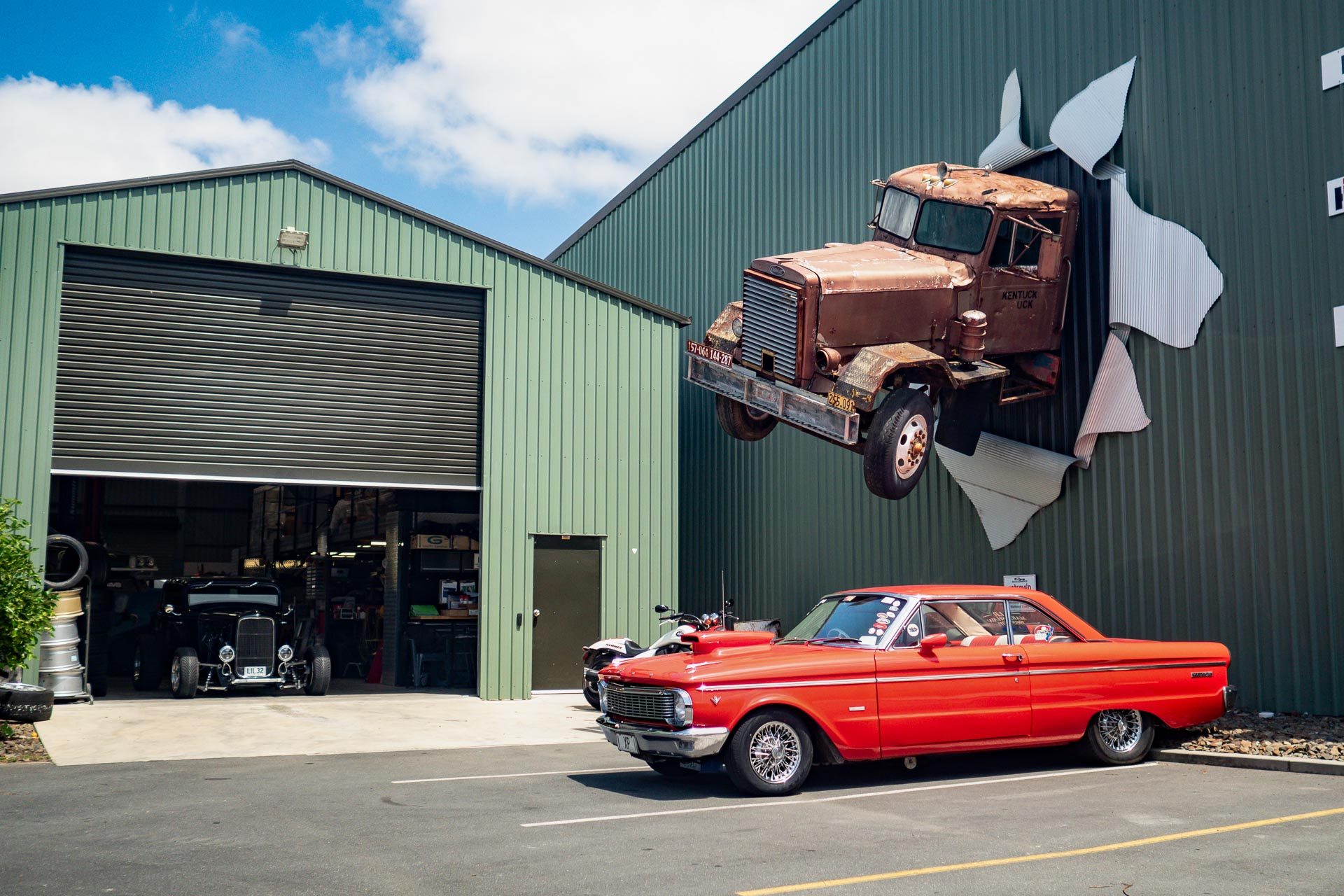4×4 driving experience Embarking on a thrilling 4×4 driving experience is more than just a weekend hobby—it’s an adventure that brings you closer to nature and pushes the limits of both machine and driver. Offroading offers an exhilarating combination of grit, strategy, and technical know-how. Whether you’re a seasoned trail conqueror or a newbie seeking that adrenaline surge, understanding the fundamentals is key to enjoying a successful and safe journey. In this guide, we’ll delve into expert tips and techniques that will elevate your 4×4 driving experience to new heights.

Choosing the Right Vehicle for Your Adventure
Your 4×4 driving experience begins with selecting the right vehicle. Not all 4x4s are created equal, and understanding the unique strengths of different models can significantly influence your offroad escapades. A good offroad vehicle should have ample ground clearance, solid suspension, and a powerful engine with good torque. Whether you’re navigating rocky paths or wading through mud pits, the vehicle’s capability is paramount.
Consider choosing a vehicle equipped with a low-range gearbox, as this feature is invaluable when tackling steep inclines and declines. Additionally, differential locks can be a game-changer, allowing you to maintain traction on slippery or uneven surfaces. Popular choices include the Jeep Wrangler, Toyota Land Cruiser, and Land Rover Defender, all of which are renowned for their resilience and adaptability in rough conditions.
Understanding the Terrain: Know Before You Go
One of the most critical aspects of a successful 4×4 driving experience is understanding the terrain you’ll be facing. Different terrains demand different driving techniques, so being prepared is essential. Before heading out, take the time to research the route and anticipate the challenges. Will you be driving on sand, mud, rocks, or snow? Each type of surface requires a unique approach:
- Sand: Keep your momentum steady and avoid sudden turns. Lower your tire pressure to increase the contact area and avoid sinking.
- Mud: Engage 4-wheel drive and maintain consistent speed to avoid getting bogged down. Avoid stopping if possible, as restarting can be difficult.
- Rocks: Use a low gear and drive slowly. Patience and precision are your best friends when rock crawling.
- Snow: Much like sand, keep your movements gentle. Engage your low-range gear and maintain traction by avoiding sudden braking or acceleration.
Understanding the terrain allows you to plan accordingly and adjust your driving style to ensure a smooth 4×4 driving experience.
The Art of Tire Management
Tires are your lifeline in any 4×4 driving experience. Ensuring they are suited to the terrain is crucial for safety and performance. All-terrain (AT) and mud-terrain (MT) tires are the most commonly used options in offroading. While AT tires offer a balance between on-road comfort and offroad performance, MT tires are designed with deeper treads that provide superior grip in loose or muddy conditions.
Equally important is tire pressure. Lowering your tire pressure increases the surface area of the tires, improving grip and flotation over soft surfaces like sand or snow. However, be mindful not to go too low, as this can lead to tire damage or loss of control. Always carry an air compressor so you can reinflate your tires when transitioning back to paved roads.
Mastering Throttle and Steering Control
One of the most overlooked yet crucial skills in a 4×4 driving experience is throttle and steering control. Unlike regular driving, offroading requires delicate inputs and a steady hand. The key is to remain smooth and controlled—sudden movements can result in loss of traction or even rollovers.
When navigating difficult terrain, use your throttle sparingly. Applying too much power can cause wheel spin, which can lead to a loss of control or getting stuck. Instead, maintain steady pressure on the throttle, allowing your vehicle to gradually overcome obstacles.
Steering also plays a pivotal role. Avoid jerky or sharp turns, especially on loose surfaces. Instead, guide the vehicle gently and let it naturally find its way over bumps and dips. The combination of smooth throttle and steering inputs ensures a stable 4×4 driving experience, reducing the risk of mishaps.
The Importance of Proper Gear Selection
Understanding how to use your vehicle’s gearing effectively is vital for a successful 4×4 driving experience. Offroad driving is rarely about speed; instead, it’s about control and power. This is where low-range gearing comes into play. Engaging low-range gears reduces speed but increases torque, giving your vehicle the power needed to tackle steep slopes, rocky terrain, and deep mud.
When approaching an obstacle, shift into low gear before you reach it. This gives you maximum control and power as you navigate. Avoid the temptation to shift gears while in the middle of an obstacle; instead, plan ahead and choose the appropriate gear before beginning your maneuver.
Understanding the Limits: Approach, Breakover, and Departure Angles
To truly excel in your 4×4 driving experience, it’s essential to understand the geometry of your vehicle and how it interacts with obstacles. The approach, breakover, and departure angles determine how well your vehicle can handle steep inclines, sharp crests, and sudden drops.
- Approach Angle: The maximum incline that the front of your vehicle can tackle without hitting the ground. A high approach angle means your bumper is less likely to scrape or get stuck when climbing over obstacles.
- Breakover Angle: This is the angle between the front and rear tires, determining whether your undercarriage will hit the ground when passing over a ridge or crest.
- Departure Angle: The maximum angle at which the rear of your vehicle can descend without dragging the rear bumper or hitting the ground.
Understanding these angles allows you to approach obstacles with confidence and reduces the risk of damage to your vehicle during your 4×4 driving experience.
The Power of Recovery Gear
No matter how experienced you are or how capable your vehicle is, getting stuck is an inevitable part of the 4×4 driving experience. That’s why carrying recovery gear is non-negotiable. The right equipment can mean the difference between a minor inconvenience and a day-ending disaster.
Essential recovery gear includes:
- Winch: An electric or manual winch can pull your vehicle out of deep mud, sand, or over obstacles. Ensure it’s rated for your vehicle’s weight.
- Recovery Tracks: These are ideal for getting out of sand, snow, or mud. Simply place them under your tires to gain traction and drive out.
- Snatch Straps and Shackles: These heavy-duty straps allow another vehicle to pull you out of a tricky spot.
- Shovel: Often overlooked, a shovel can be a lifesaver in digging out tires or clearing debris.
Investing in high-quality recovery gear ensures that your 4×4 driving experience remains enjoyable and that minor setbacks don’t ruin your adventure.
The Vital Role of Spotters
In particularly challenging conditions, a spotter can be invaluable. A spotter is someone who stands outside the vehicle and guides the driver through tricky terrain. They have a better view of the vehicle’s angles, tire placement, and surrounding obstacles. Communication between the driver and spotter is key—clear hand signals and concise commands help you navigate hazards with precision.
If you’re offroading solo and don’t have a spotter, it’s wise to exit your vehicle and assess the terrain before attempting difficult sections. Understanding what lies ahead allows you to plot a clear path and adjust your approach accordingly. This extra step can make all the difference in your 4×4 driving experience.
Uphill and Downhill Mastery
Climbing steep inclines and descending sharp declines are core challenges in any 4×4 driving experience. Uphill driving requires a fine balance between momentum and control. Approach the hill with a steady speed and maintain it without aggressively accelerating—this ensures traction is maintained throughout the climb. If you lose momentum mid-hill, resist the urge to floor the throttle; instead, carefully back down in a straight line and attempt again.
When descending, engage a low gear and let engine braking do the work. Avoid using the brakes excessively as this can cause sliding or loss of control. Allow the vehicle’s gearing to control your descent speed and focus on steering with precision.
Tackling Water Crossings
Water crossings can be one of the most thrilling yet daunting aspects of a 4×4 driving experience. Before attempting any water crossing, stop and assess its depth, flow, and the condition of the riverbed. If the water is above the vehicle’s recommended wading depth, avoid the crossing entirely.
Enter the water slowly and keep a consistent speed to create a bow wave in front of the vehicle. This wave helps keep water away from the engine and vital components. Once committed, avoid stopping—keep the momentum going until you reach the other side. After exiting the water, it’s a good idea to test your brakes as they may be wet and less effective.
The Thrill of Night Offroading
For those seeking an extra layer of challenge, night offroading offers a unique 4×4 driving experience. Darkness transforms familiar trails into uncharted territories, testing both your navigation skills and vehicle lighting. Equip your vehicle with high-quality auxiliary lights, such as LED light bars or spotlights, to illuminate the path ahead. Depth perception can be tricky at night, so take extra care when assessing obstacles. Keep your speed low and rely heavily on your instincts and experience.
Pre-Trip Preparation: Safety and Planning
Before setting out on any 4×4 driving experience, thorough preparation is crucial. Plan your route, inform someone of your plans, and ensure your vehicle is in optimal condition. Check tire pressures, fluid levels, and ensure all recovery gear is packed and easily accessible. Carry enough food, water, and first aid supplies in case of unexpected delays. A well-preplanned trip minimizes risks and ensures that your 4×4 driving experience remains both enjoyable and safe.
Emergency Protocols: Be Ready for the Unexpected
While adventure is at the heart of offroading, it’s essential to be prepared for emergencies. Breakdowns, injuries, and even getting lost are all potential hazards that could arise during your 4×4 driving experience. Having an emergency protocol in place can make all the difference.
Key items to carry include:
- First Aid Kit: A comprehensive first aid kit should always be on hand, equipped with bandages, antiseptics, and tools for minor injuries.
- Navigation Tools: A GPS unit, map, and compass are vital, especially in areas without cell reception. Knowing your exact location and having alternative routes planned can be lifesavers.
- Communication Devices: A reliable two-way radio or satellite phone can be invaluable for calling in help when you’re out of cell range.
- Extra Supplies: In case of delays or extended stays, always carry additional fuel, food, water, and warm clothing.
Environmental Awareness and Responsible Offroading
A fulfilling 4×4 driving experience isn’t just about the thrill—it’s also about respecting the environment. Offroading through fragile ecosystems or private property can have negative impacts if done irresponsibly. Stick to established trails, avoid driving over vegetation, and always pack out what you bring in. Sustainable offroading ensures that these natural playgrounds remain intact for future generations to enjoy.
Furthermore, be mindful of local wildlife. Avoid loud noises that can disturb animals, and steer clear of nesting areas or sensitive habitats. Practicing “Tread Lightly” principles ensures that your adventures leave minimal trace behind.
The Joy of Community and Offroad Clubs
One of the most rewarding aspects of the 4×4 driving experience is the sense of community it fosters. Joining an offroad club can connect you with like-minded enthusiasts who share your passion for adventure. Offroad clubs often organize group trips, trail clean-ups, and skill-sharing events that can significantly enhance your knowledge and experience. Plus, having experienced drivers nearby is a great way to learn and improve your own skills in a supportive environment.
Post-Adventure Maintenance: Keep Your Vehicle in Top Shape
After a rigorous day on the trails, your vehicle will likely be covered in mud, dirt, and debris. Regular maintenance is crucial to keep it in peak condition for future expeditions. Begin by thoroughly washing off any mud and grit, paying close attention to the undercarriage where buildup can occur.
Check your tires for cuts, punctures, or any signs of damage. Inspect the suspension, drivetrain, and axles for wear and tear, and top up any fluids that may have been consumed during your adventure. A post-trip inspection not only prolongs the life of your vehicle but also ensures it’s ready for the next 4×4 driving experience.
4×4 driving experience
The essence of a 4×4 driving experience lies not just in reaching the summit of a hill or crossing a rugged trail—it’s in the journey itself. Offroading offers a unique blend of challenges and rewards that few other activities can match. From the roar of the engine as you conquer difficult terrain to the camaraderie shared around a campfire with fellow adventurers, offroading is about savoring every moment.
The world is full of untamed landscapes waiting to be explored. Whether you’re navigating through dense forests, climbing rocky inclines, or cruising over sandy dunes, each new trail presents an opportunity to test your limits and embrace the thrill of the unknown. So, gear up, plan wisely, and let the adventure begin. With the right knowledge, preparation, and mindset, your next 4×4 driving experience is bound to be one for the books.





More Stories
Elevate Your Off Road Experience with These Top Tips
Best Small 4×4 Off Road Top Picks for Compact Adventures
Off Road Driving Experience Master the Mud and Trails